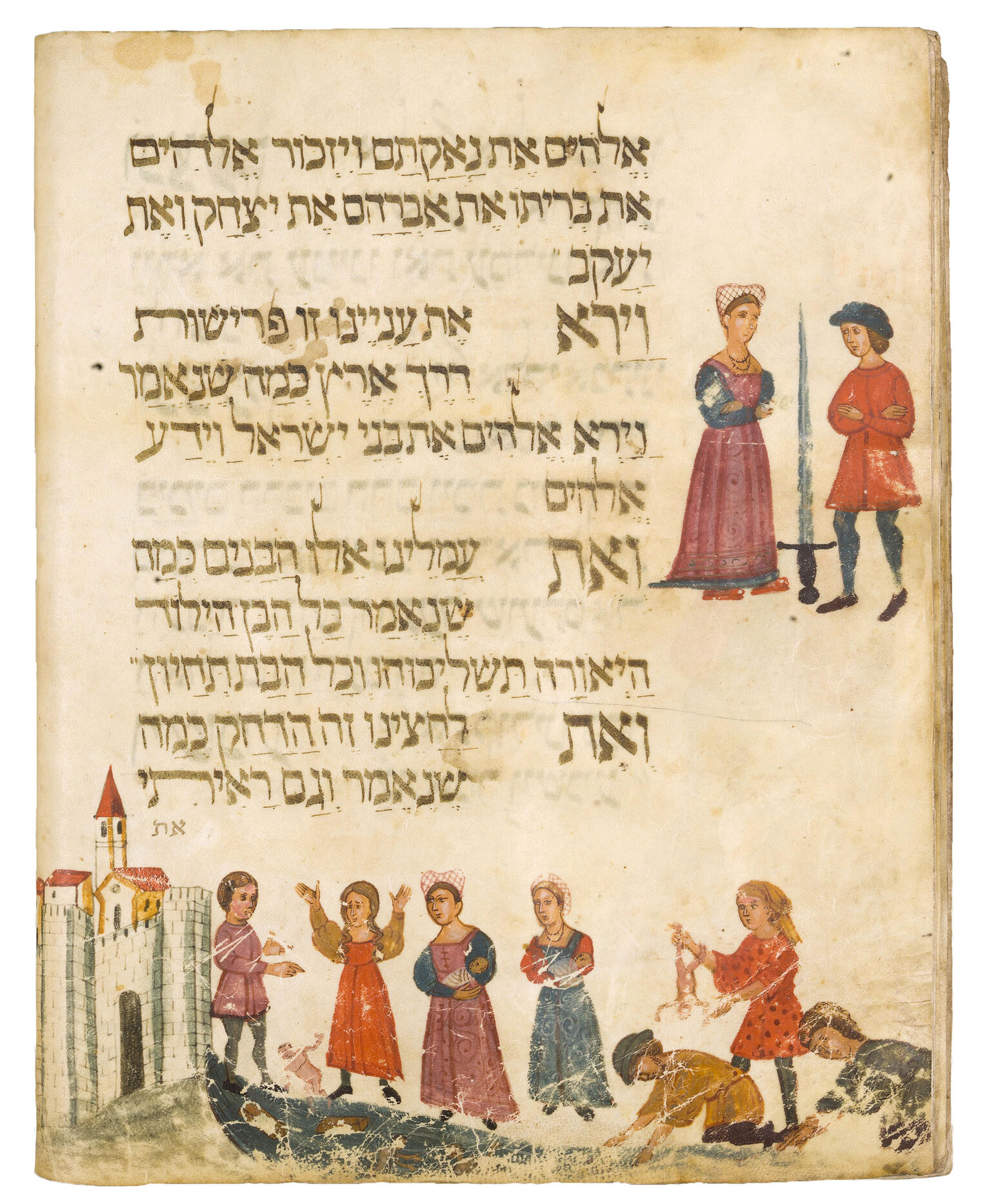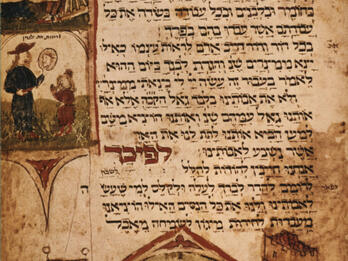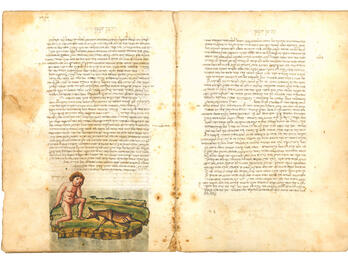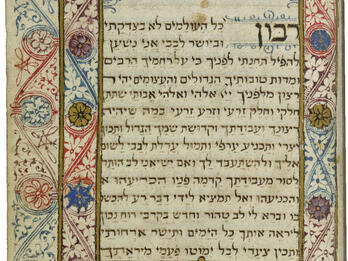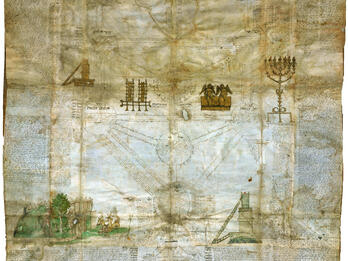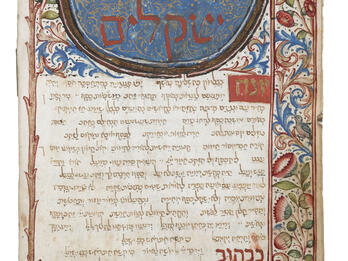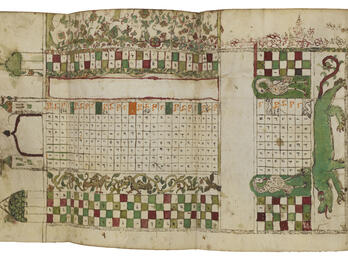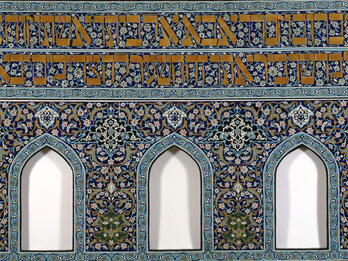Chantilly Haggadah
This Haggadah was produced in the city of Candia (now Heraklion), on the island of Crete, which was at the time under Venetian rule. The Haggadah follows the Passover seder according to the Romaniote rite—that of the Greek-speaking Jewish communities of the eastern Mediterranean. The artist who produced the illustrations based some of them on the so-called Brother Haggadah, a fourteenth-century Catalan codex that had been carried to Candia by the beginning of the fifteenth century. The image here, of a man and a woman separated by a sword, however, is a typical Italian Ashkenazic iconographical representation of the words perishut derekh erets (disruption of family life) in the text, one of the hardships encountered by Jews when they were slaves in Egypt. According to midrash, Pharaoh decreed that married men could not go home to their wives at night. At the bottom is a depiction of the killing of the firstborn sons.
Credits
Published in: The Posen Library of Jewish Culture and Civilization, vol. 5.


